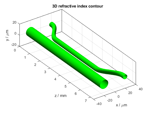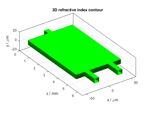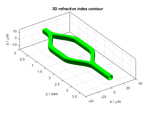Applying Beam Propagation Method
The Beam Propagation Method (BPM) is a popular simulation technique for evaluating the evolution of optical fields in waveguides and photonic devices. It takes advantage of the fact that light in such devices predominantly propagates along a particular direction, e.g., the axis of a fiber. As a result BPM can efficiently simulate light propagation in large structures that extend over many thousand wavelengths.
Explore the award-winning software BeamLab when simulating optical devices and waveguides in your familiar MATLAB® environment. With a steadily growing library of easy-to-use functions, it is highly flexible in waveguide and input field design. It has extensive post-processing possibilities and visualization options for generating videos and print-ready plots. Besides, it can also take advantage of the MATLAB® Parallel Computing Toolbox™ to solve parameter sweeps and optimization problems in a quick and convenient way using multicore processors and computer clusters.1
The following example shows beam propagation in one core of a vanishing-core photonic lantern. At the input end the device consists of 6 cores surrounded by an inner and outer cladding. This structure is then tapered down to a multimode fiber. Here the inner and outer cladding of the photonic lantern take over the role of the core and cladding of the multimode fiber at the output end.
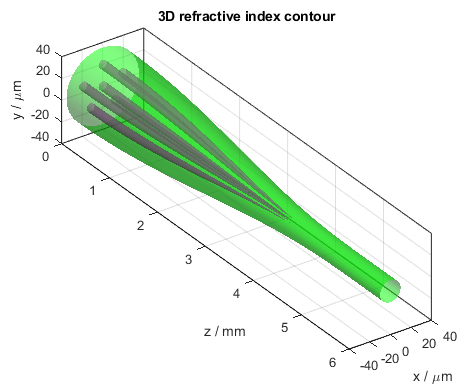
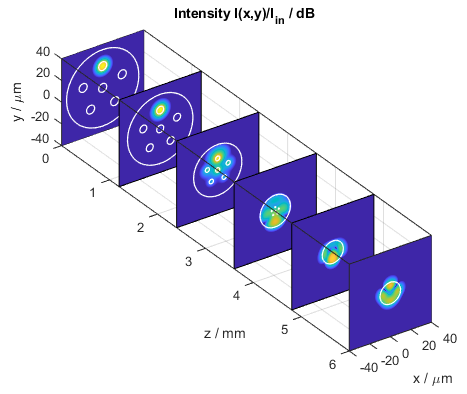
Example of a BPM simulation in a vanishing-core photonic lantern with BeamLab’s Beam Propagation Toolbox
- Requires MATLAB® Parallel Computing Toolbox™.


